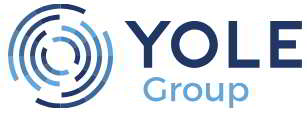The global memory market is experiencing unprecedented growth, driven by soaring demand for AI applications and advanced memory technology innovations. As of 2024, memory market revenues reached a staggering $170 billion, with projections suggesting an even more remarkable trajectory for the upcoming years. Major segments such as DRAM and NAND continue to dominate the landscape, while emerging technologies like High Bandwidth Memory (HBM) are carving out significant market shares. According to the latest insights from Yole Group in their report Status of the Memory Industry 2025, the memory ecosystem is evolving rapidly amid geopolitical pressures and intense competition.
Record Revenues and Future Projections
In 2024, the memory market’s revenue surged to $170 billion, with DRAM contributing approximately $97 billion and NAND accounting for $68 billion. The outlook for 2025 is even more optimistic, with expectations for revenue to surpass $200 billion. DRAM is projected to account for roughly $129 billion, while NAND, despite its slower recovery, is forecasted to bring in about $65 billion. This remarkable growth underscores the increasing reliance on memory technologies for a variety of applications, particularly in the data center sector driven by artificial intelligence (AI) workloads.
Furthermore, HBM, which has gained traction due to its superior speed and bandwidth, is anticipated to nearly double its revenue to around $34 billion in 2025. This segment is on a path to outpace conventional DRAM technologies, as analysts predict a 33% compound annual growth rate (CAGR) for HBM through 2030. Yole Group’s principal analyst, Simone Bertolazzi, noted that conventional DRAM, encompassing DDR, LPDDR, and GDDR, grew to $80 billion in 2024, but is projected to grow modestly at a mere 3% CAGR through 2030 [Yole Group].
NAND Market Dynamics and Challenges
While DRAM is enjoying a strong recovery, the NAND segment faces a more challenging landscape. Slower-than-expected consumer demand and high inventory levels have led major suppliers to implement production cuts and underutilize their fabrication capacities. These supply-side adjustments have managed to alleviate some immediate pricing pressures, but the overall growth in the NAND market remains constrained. Despite these hurdles, forecasts indicate that NAND will still maintain its place within the memory market, albeit at a slower pace compared to its DRAM counterparts.
As the geopolitical landscape continues to evolve, particularly in relation to trade relations with China, the memory market may see further volatility. In April 2025, the United States imposed tariffs on countries with trade surpluses, impacting supply chains and adding pressure to global memory suppliers. “We note a pull-forward in demand to the first half of 2025, as customers aim to hedge against potential supply risks,” stated Josephine Lau, senior technology and market analyst at Yole Group. “Despite these challenges, memory markets remain resilient” [Storage Newsletter].
The Rise of Chinese Memory Players
In a shifting competitive landscape, Chinese manufacturers are intensifying their efforts in the memory sector. Companies like CXMT and YMTC are stepping up their game, particularly in the HBM and DRAM segments. CXMT has notably disrupted the DRAM market with its cost-competitive DDR3 and DDR4 offerings, compelling established players to accelerate their transition to advanced DDR5 and HBM technologies. By the end of 2024, other Chinese companies followed suit, with KingBank and Gloway introducing their first DDR5 modules utilizing CXMT’s innovative G4 DRAM.
Simultaneously, YMTC has unveiled its latest 5-Gen 3D NAND chip, which boasts an advanced architecture of 294 layers, utilizing Xtacking 4.0 technology. The combination of innovation and aggressive pricing strategies is reshaping the competitive dynamics in the memory market and driving the need for established companies to refine their approaches to maintain market share.
Outlook and Strategic Shifts
As we move deeper into 2025, the memory industry stands on the brink of a transformational shift. The sector is projected to deliver record revenues, exceeding $190 billion, amidst an environment characterized by increasing complexity and competition. AI continues to be a focal growth engine, paving the way for strategic adjustments in technology roadmaps and supply chains. Companies across the sector are assessing their capabilities and aligning with new market trends to sustain competitive advantages.
Against this backdrop, the Status of the Memory Industry 2025 report by Yole Group serves as a crucial resource, offering insights into the forces reshaping memory markets. It covers topics ranging from the leadership of HBM in high-performance applications to the emergence of Chinese market players and the implications of global policy changes. Decision-makers within the industry will benefit from the comprehensive analysis presented in the report, as it outlines the critical paths that companies must navigate in this evolving landscape.
Conclusion
The memory market is not just recovering from previous downturns; it is actively redefining itself. With significant revenue forecasts and the integration of cutting-edge technologies, the industry is positioned for robust growth. However, as competition heats up and geopolitical tensions mount, companies must adapt swiftly to stay ahead in this dynamic environment.
Quick Reference Table
| Category | 2024 Revenue | 2025 Projected Revenue |
|---|---|---|
| DRAM | $97 billion | $129 billion |
| NAND | $68 billion | $65 billion |
| HBM | ~$17 billion | ~$34 billion |
| Total Memory Market | $170 billion | >$190 billion |

